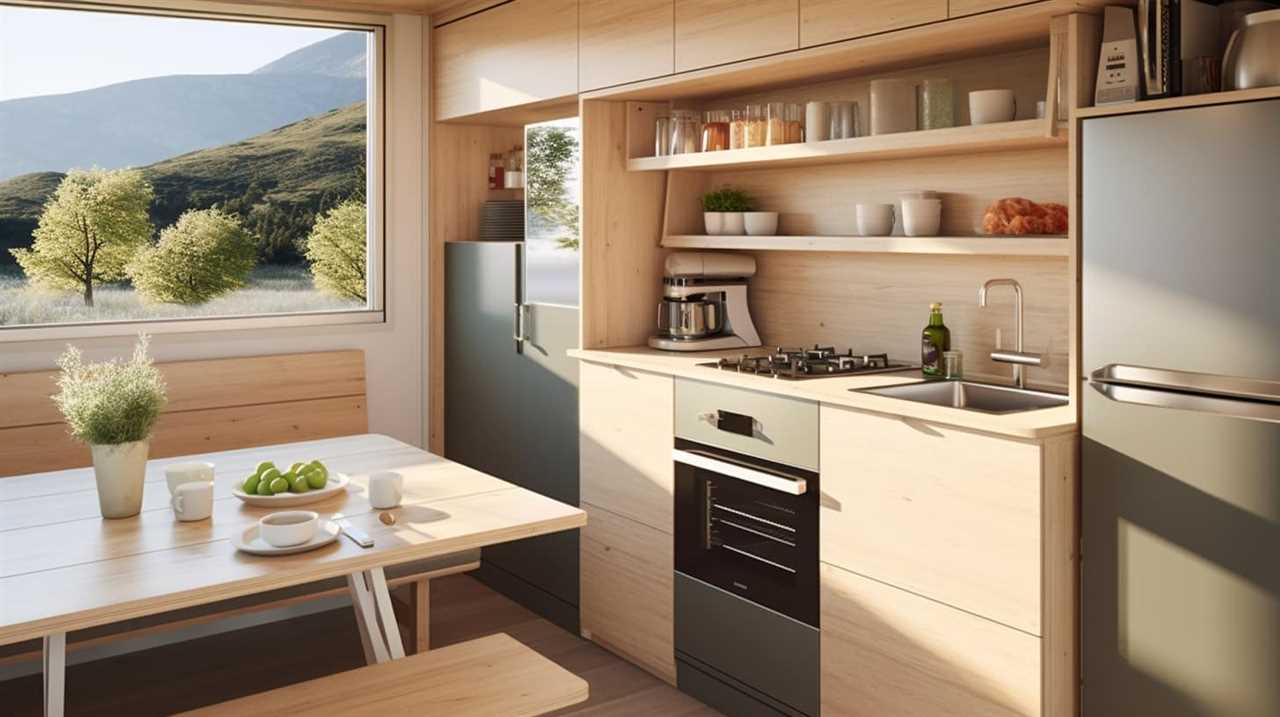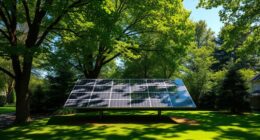Are you exhausted from the usual vacation rentals? Well, we have the perfect solution for you! Check out our list of 7 must-visit tiny house rentals for your next trip.
We know what you’re thinking – tiny houses might not be comfortable or spacious enough. But trust us, these cozy gems are packed with charm, modern amenities, and breathtaking locations.
Get ready to experience the perfect blend of simplicity and luxury as you embark on your well-deserved vacation.
Key Takeaways
- Secluded Woodland Retreat and Rustic Cabin in the Woods offer unique and peaceful experiences in the midst of nature, with amenities such as fully equipped kitchens and nearby hiking trails.
- Coastal Getaways like Beachside Hideaway and Secluded Coastal Retreats provide a tranquil beachside escape with luxury amenities and stunning ocean views.
- Tranquil Waterfront Accommodations such as Tranquil Oceanfront Accommodations and Lakefront Serenity offer peaceful settings for relaxation and rejuvenation, with activities like yoga sessions and leisurely strolls along the beach or lake.
- Cozy and Intimate Retreats like Cozy and Intimate Retreat and Urban Oasis provide a cozy and intimate atmosphere, with options for outdoor activities or a blend of city living and peaceful retreat.
Secluded Woodland Retreat
We’re excited to share with you our top pick for a secluded woodland retreat: the Rustic Cabin Haven.

Tucked away in a hidden forest sanctuary, this cozy cabin offers a truly unique and secluded treehouse experience.
As you step onto the property, you’ll be greeted by towering trees and the soothing sounds of nature.
The Rustic Cabin Haven is perfect for those seeking a peaceful escape from the hustle and bustle of everyday life.
Inside, you’ll find a charming living area complete with a fireplace, a fully equipped kitchen, and a comfortable bedroom with breathtaking views of the surrounding forest.

Whether you choose to spend your days exploring the nearby hiking trails or simply relaxing on the cabin’s private deck, this secluded woodland retreat is sure to provide a rejuvenating and unforgettable experience.
Beachside Hideaway
Imagine waking up to the sound of waves crashing against the shore, the scent of salty sea air filling your lungs.
Secluded coastal retreats offer the perfect beachside hideaway for a tranquil vacation. With oceanfront accommodations, you can relax and unwind, immersing yourself in the beauty and serenity of the beach.
Secluded Coastal Retreats
Let’s experience the tranquility of a secluded coastal retreat at this charming beachside hideaway. Nestled in a remote location, this retreat offers the perfect escape from the hustle and bustle of everyday life. Here, you can indulge in luxury amenities while enjoying the stunning ocean views and the sound of crashing waves.

Private Beach Access: Start your day with a leisurely stroll on the pristine sandy beach just steps away from your doorstep. Breathe in the salty air and feel the warmth of the sun on your skin.
Serene Surroundings: Immerse yourself in nature as you relax on the spacious deck, surrounded by lush greenery and the soothing sound of seagulls. Take a moment to unwind and let go of any stress or worries.
Cozy Coastal Interiors: Inside, you’ll find a beautifully designed space that combines comfort and style. Cozy up on the plush sofa or enjoy a delicious meal in the fully equipped kitchen. Every detail has been carefully thought out to ensure your stay is nothing short of exceptional.
Escape to this secluded coastal retreat and create lasting memories in this beachside hideaway.

Tranquil Oceanfront Accommodations
Our tranquil oceanfront accommodations at the beachside hideaway offer a perfect escape for your next vacation getaway.
Picture yourself waking up to the sound of crashing waves, with the salty ocean breeze filling the air. Our peaceful waterfront bungalow provides the ideal setting for relaxation and rejuvenation.
You can start your day with a refreshing yoga session on the oceanfront deck, as the sun rises over the horizon. The stunning views of the sparkling blue waters will elevate your practice to new heights.
Afterward, you can take a leisurely stroll along the sandy beach, collecting seashells and feeling the sand between your toes.

In the evening, unwind with a glass of wine while watching the sunset paint the sky in vibrant hues.
Our oceanfront yoga retreat promises a truly tranquil and memorable experience.
Mountain Escape
We can’t resist the allure of a mountain escape, with its scenic views that take our breath away and its tranquil atmosphere that soothes our souls.
Whether we’re hiking through lush forests, conquering challenging trails, or simply enjoying the beauty of nature from our cozy tiny house, there’s no shortage of outdoor activities and adventures to be had.

And at the end of the day, as we curl up in our intimate retreat, surrounded by the majestic mountains, we can’t help but feel a sense of peace and contentment like no other.
Scenic Views and Tranquility
Visiting a tiny house rental in the mountains will truly provide us with breathtaking scenic views and a sense of tranquility. Imagine waking up to the sight of majestic peaks stretching as far as the eye can see, with the soft glow of the morning sun casting a golden hue over the landscape. As you step outside, the crisp mountain air fills your lungs, bringing with it a feeling of calm and serenity.
Here are three reasons why a secluded mountain getaway offers the perfect peaceful countryside escape:
-
Uninterrupted Nature: Surrounded by lush forests, babbling streams, and abundant wildlife, you’ll find yourself immersed in the beauty of untouched nature. Disconnect from the hustle and bustle of everyday life and reconnect with the simplicity and peace that nature provides.

-
Tranquil Hiking Trails: Lace up your hiking boots and explore the network of scenic trails that wind their way through the mountains. With each step, you’ll discover hidden waterfalls, panoramic vistas, and a sense of tranquility that can only be found in the great outdoors.
-
Stargazing Spectacle: When night falls, the absence of city lights allows the stars to put on a dazzling show. Lay back on a blanket and marvel at the countless stars that light up the night sky, creating a mesmerizing display that will leave you in awe.
A mountain escape offers not only stunning views but also a peaceful sanctuary where you can recharge, reconnect, and find solace in the beauty of nature.
Outdoor Activities and Adventure
Immersing ourselves in the outdoor activities and adventure of a mountain escape is an exhilarating experience. The majestic beauty of the mountains serves as the backdrop for an array of thrilling activities that are perfect for nature enthusiasts. Whether it’s camping beneath the starry night sky or exploring the numerous hiking trails, there’s something for everyone. As we venture into the wilderness, we bring along our camping essentials, such as a sturdy tent, cozy sleeping bags, and a reliable camp stove.

The hiking trails offer breathtaking views and the chance to encounter fascinating wildlife. From leisurely strolls to challenging treks, these trails cater to all skill levels. As we navigate through the rugged terrain, we can’t help but feel a sense of excitement and wonder.
The outdoor activities and adventure of a mountain escape provide an unforgettable experience that rejuvenates the soul and invigorates the spirit.
With our adventurous spirits fulfilled, it’s time to transition into the next section: a cozy and intimate retreat.
Cozy and Intimate Retreat
After a day filled with outdoor adventures, we can relax and unwind in the cozy and intimate retreat of a mountain escape. Nestled in the heart of nature, surrounded by towering trees and breathtaking views, this tiny house rental offers the perfect setting for a relaxing countryside escape. Here are three reasons why this lakeside tranquility is a must-visit:

-
Serene Lakeside Setting:
Imagine waking up to the gentle sound of water lapping against the shore, sipping your morning coffee as you watch the sunrise over the tranquil lake. This mountain escape provides a serene and picturesque backdrop for your getaway. -
Cozy Cabin Feel:
Step inside this tiny house and instantly feel the warmth and coziness envelope you. With rustic wooden furnishings, a crackling fireplace, and soft, plush blankets, this retreat offers the perfect ambiance for relaxation and rejuvenation. -
Nature’s Playground:
Whether you prefer hiking through scenic trails, fishing in the calm lake waters, or simply basking in the beauty of nature, this mountain escape is a gateway to endless outdoor activities. Embrace the peacefulness of the countryside and reconnect with nature in this idyllic retreat.
Escape to the mountains and experience the tranquility and charm of this cozy and intimate retreat.

Rustic Cabin in the Woods
We can’t wait to experience the cozy charm of staying in a rustic cabin nestled in the woods. A secluded forest getaway offers a perfect escape from the hustle and bustle of everyday life.
Imagine waking up to the peaceful sounds of nature, surrounded by towering trees and the fresh scent of pine. This off-grid living experience allows us to disconnect from technology and reconnect with the beauty of the natural world.
The rustic cabin provides a retreat from the modern world, with its simple yet comfortable amenities. We can spend our days exploring the nearby hiking trails, fishing in the serene lake, or simply relaxing on the cabin’s porch, enjoying the tranquility of the woods.
This rustic cabin in the woods promises a truly rejuvenating and memorable vacation.
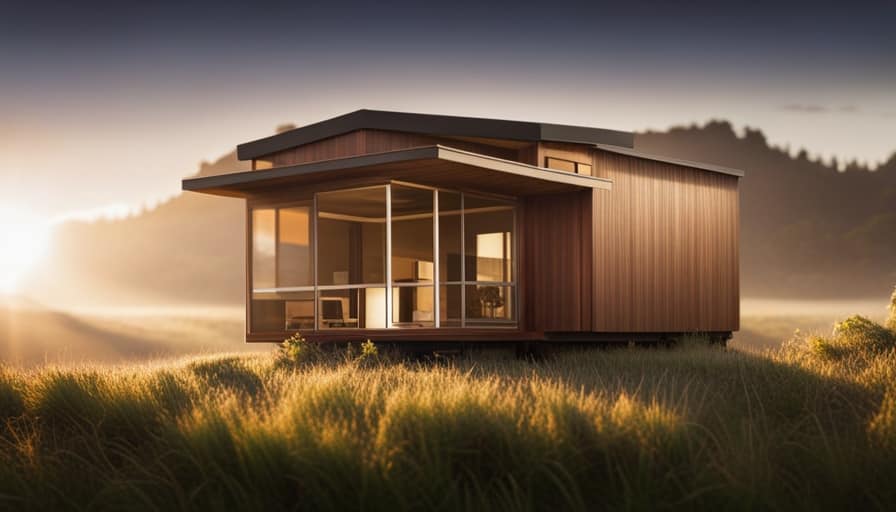
Coastal Cottage Charm
Let’s explore the enchanting coastal cottage charm by booking a stay in one of these delightful tiny house rentals. Here are three reasons why cozy beachfront bungalows offer the perfect setting for seaside relaxation:
-
Tranquil Ocean Views: Imagine waking up to the sound of waves crashing and the sight of the sun rising over the horizon. Cozy beachfront bungalows provide uninterrupted views of the ocean, allowing you to experience the calming effect of the seaside from the comfort of your tiny house.
-
Charming Coastal Decor: These tiny houses are designed with coastal cottage charm in mind. From nautical accents to soft pastel colors, each rental exudes a warm and inviting atmosphere, perfect for unwinding after a day spent exploring the beach.
-
Proximity to the Shore: With a stay in a cozy beachfront bungalow, you’ll never be far from the shoreline. Step outside your door and feel the sand between your toes, take long walks along the coast, or simply relax on the beach with a good book.
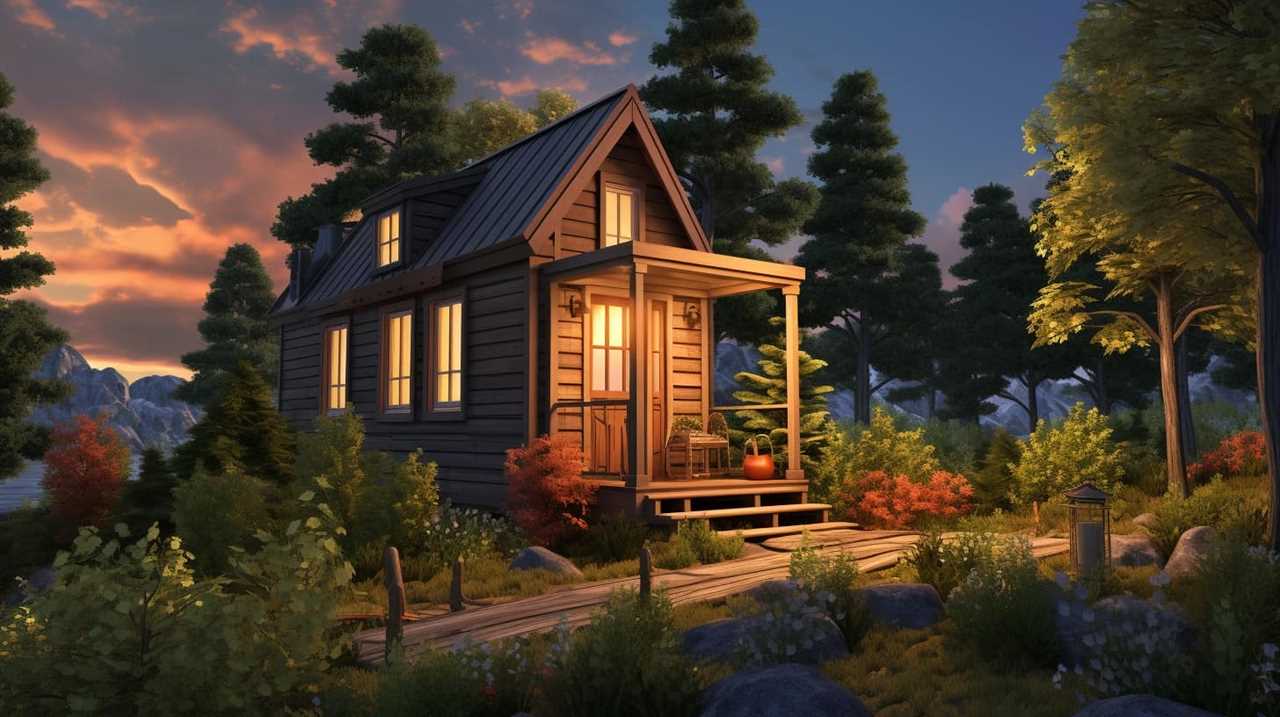
Experience the magic of coastal living by staying in one of these cozy beachfront bungalows, where seaside relaxation awaits.
Urban Oasis
As we venture into the next subtopic, let’s explore the unique charm of urban oasis rentals and discover why they offer an unforgettable vacation experience. Urban oasis rentals are the perfect blend of city living and peaceful retreat. Picture yourself in a cozy tiny house nestled in the heart of a bustling city, surrounded by lush greenery and tranquility. These rentals often feature rooftop gardens, allowing you to indulge in the joys of urban gardening while enjoying breathtaking views. After a day of exploring the city, unwind on the rooftop terrace, basking in the warm sun and gentle breeze. The table below highlights the key features of urban oasis rentals, showcasing their appeal to those seeking a serene escape amidst the urban jungle.
| Features | Description |
|---|---|
| Urban gardening | Experience the joy of growing your own herbs and vegetables in the heart of the city. |
| Rooftop relaxation | Unwind and soak in the stunning city views from the comfort of your own private rooftop terrace. |
| Tranquil oasis | Escape the hustle and bustle of city life and find peace in your own little sanctuary. |
| Convenient location | Enjoy easy access to the city’s best attractions, restaurants, and entertainment options. |
Lakefront Serenity
Imagine waking up to the sound of gentle waves lapping against the shore, taking a refreshing morning dip in the crystal-clear water, and spending your days basking in the sun on a private dock – lakefront serenity awaits at these must-visit tiny house rentals.
Here are three reasons why you should consider a lakefront camping experience for your next vacation:

-
Tranquil surroundings: Nestled amidst nature, these tiny house rentals offer a peaceful escape from the hustle and bustle of everyday life. The serene lakefront setting provides the perfect backdrop for relaxation and rejuvenation.
-
Waterfront activities: Whether you enjoy fishing, kayaking, or simply lounging on the beach, these rentals offer a variety of water-based activities. Spend your days exploring the lake, soaking up the sun, and creating memories by the water’s edge.
-
Scenic views: Wake up to breathtaking views of the lake and surrounding landscapes. From colorful sunsets to starry nights, each moment spent at these tiny house rentals will leave you in awe of the natural beauty that surrounds you.
Embark on a journey of waterfront relaxation and immerse yourself in the tranquility of lakefront camping.

Frequently Asked Questions
Are the Tiny House Rentals Pet-Friendly?
Yes, our tiny house rentals are pet-friendly. We understand the importance of including furry friends in your vacation. Our cleaning team ensures a spotless environment, and we have clear pet policies in place.
Is There a Minimum Stay Requirement for Booking a Tiny House Rental?
There is a minimum stay requirement for booking a tiny house rental. Our cancellation policy allows for flexibility, but it’s best to check the specific rental’s details. We strive to provide an enjoyable experience for all our guests.
Are There Any Additional Fees or Taxes Associated With Booking a Tiny House Rental?
There may be hidden costs associated with booking a tiny house rental, such as cleaning fees or taxes. It’s important to check the refund policy to see if there are any additional fees for cancellations.
Are There Any Restrictions on Noise Levels or Partying in the Tiny House Rentals?
When it comes to noise restrictions and partying rules, we’ve got you covered. Our tiny house rentals prioritize peace and tranquility, ensuring a relaxing getaway for all our guests.

Are the Tiny House Rentals Equipped With Basic Amenities Such as Kitchen Appliances and Bathroom Facilities?
Yes, the tiny house rentals are equipped with all the basic amenities you need for a comfortable stay. They have kitchen appliances and bathroom facilities, making them a convenient option for your next vacation getaway.
Conclusion
So why wait any longer? Escape the hustle and bustle of everyday life and immerse yourself in the tranquility and charm of these must-visit tiny house rentals.
Whether you prefer a secluded woodland retreat, a beachside hideaway, or a mountain escape, there’s something for everyone. Indulge in the rustic cabin in the woods or embrace the coastal cottage charm.
Unwind in an urban oasis or find serenity by the lakefront. Your dream vacation awaits in these enchanting tiny houses.
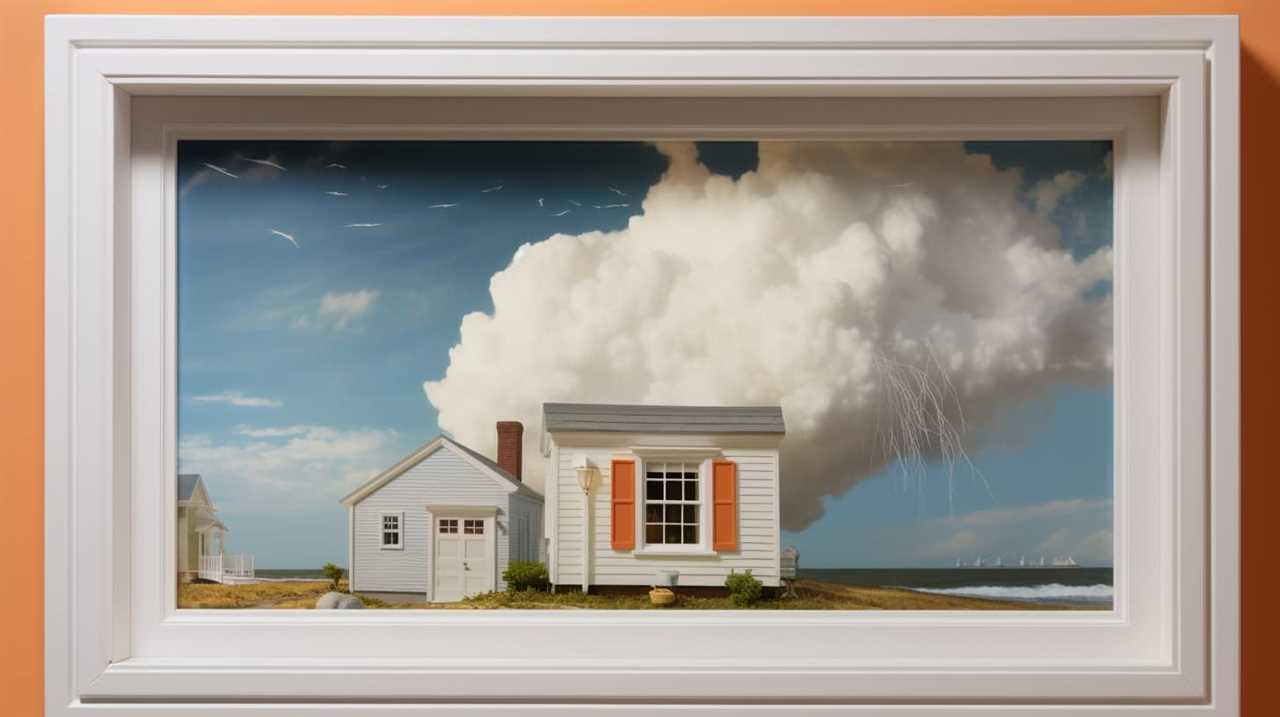
I’m Theodore, and I love tiny houses. In fact, I’m the author of Tiny House 43, a book about tiny houses that are also tree houses. I think they’re magical places where imaginations can run wild and adventures are just waiting to happen.
While tree houses are often associated with childhood, they can be the perfect adult retreat. They offer a cozy space to relax and unwind, surrounded by nature. And since they’re typically built on stilts or raised platforms, they offer stunning views that traditional homes simply can’t match.
If you’re looking for a unique and romantic getaway, a tree house tiny house might just be the perfect option.





